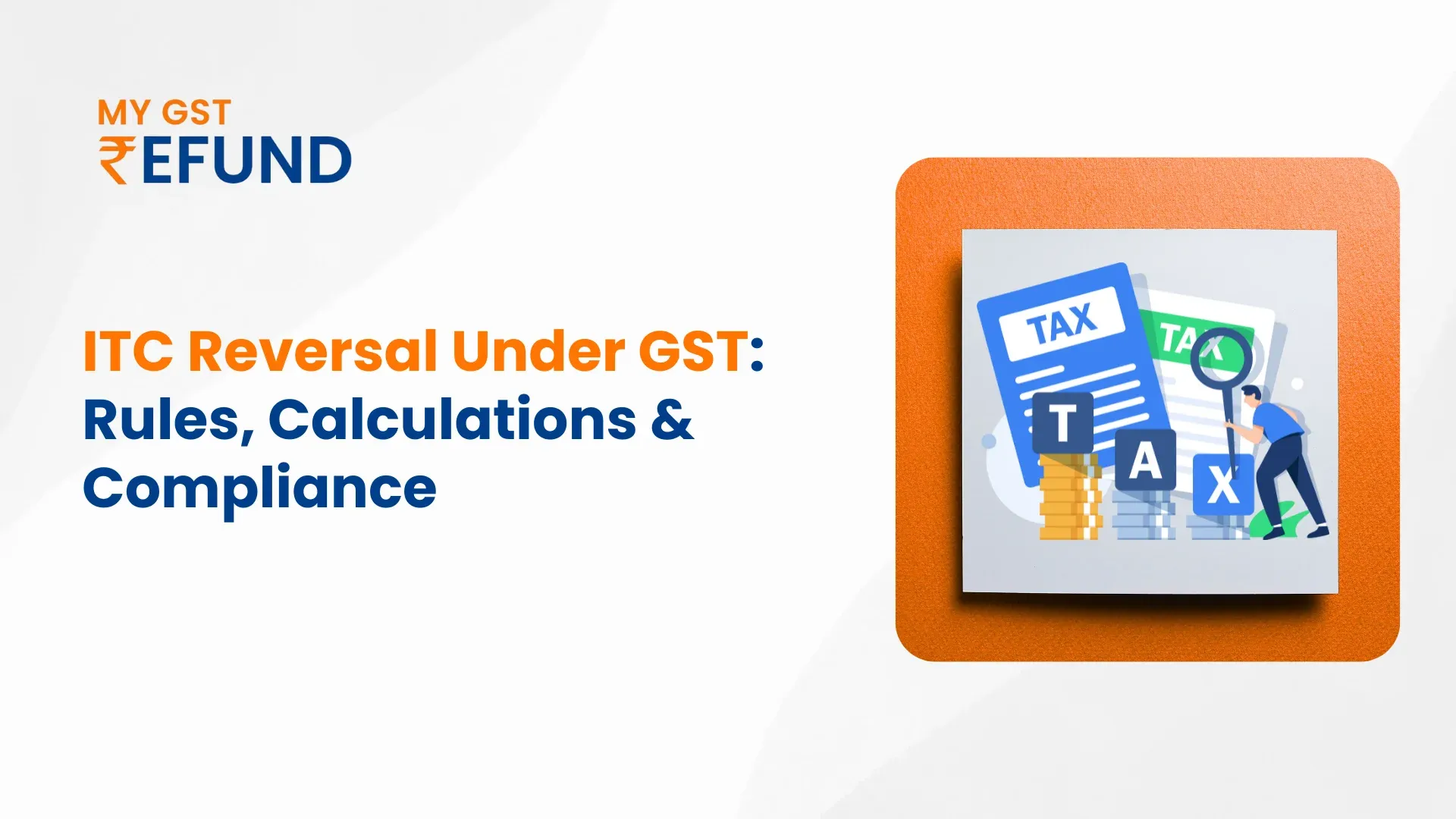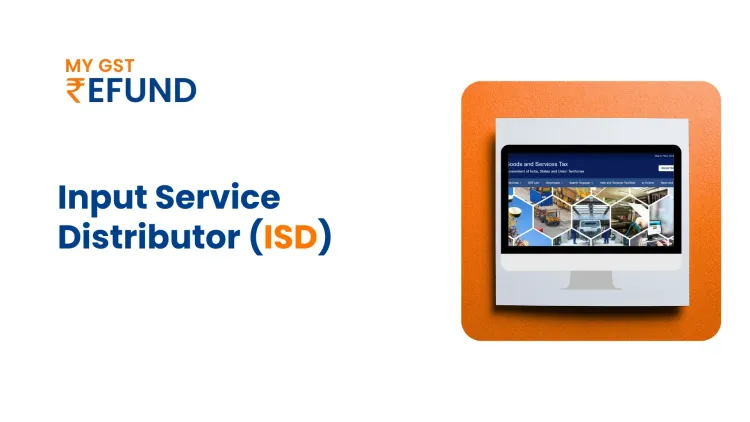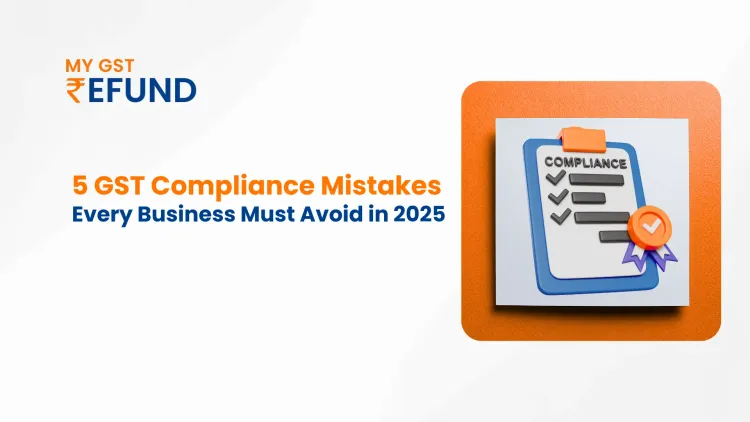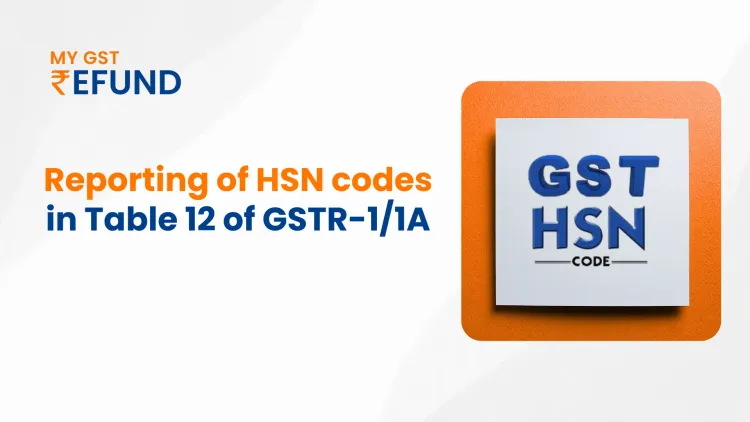ITC Reversal Under GST: Rules, Calculations & Compliance
The GST (Goods and Services Tax) implementation brought major changes to Indian taxation through its Input Tax Credit (ITC) mechanism. Through ITC, businesses can reduce tax expenses paid on purchasing materials by using these amounts to pay taxes on their sales. Under certain situations, businesses require the option to undo previously accepted input tax credit obligations. The concept of ITC reversal under GST is explained in detail within this blog alongside rules for implementation and calculations, and mandatory compliance requirements for businesses.
Understanding Input Tax Credit (ITC)
The understanding of ITC function requires a basic familiarity with ITC structures first. A business operating under GST can receive tax credits from the purchases of goods and services when these items are used specifically for business operations. A value-added system operating through the supply chain lets taxes be levied solely on product worth enhancements.
To claim ITC, the following conditions must be met:
- The taxpayer must be in possession of a valid tax invoice.
- The goods or services must be used in the course of business.
- The supplier must have filed the GST return and paid the tax.
However, when certain conditions are violated or when the ITC is claimed incorrectly, a reversal of the ITC in GST becomes necessary.
What is ITC Reversal?
A business can reverse the input tax credit it originally claimed through the ITC reversal under GST. ITC reversal occurs when business operations fail to meet validity standards because of non-compliance or broken conditions. The output tax liability receives additions from reversal amounts because business owners must remit tax obligations on this money again.
Businesses need to undo or readjust input tax credits according to different circumstances that include supplier payment defaults and non-business use of services and goods, or termination of GST registration status. All ITC claims require immediate reversal as per the prescribed deadline to prevent penalties with added interest amounts.
Scenarios Where ITC Reversal is Required
ITC needs to be reversed in the following scenarios, as specified under GST:
Failure to Pay to Supplier (Rule 37): If the recipient does not pay the supplier for the goods or services within 180 days from the invoice date, the ITC claimed must be reversed.
Supplier Fails to Pay Tax (Rule 37A): If the supplier does not pay the tax by filing GSTR-3B by 30th September of the following financial year, the ITC claimed by the recipient must be reversed.
Mixed Use of Goods (Rule 42 & 43): When inputs or capital goods are used partly for taxable and partly for exempt supplies or non-business purposes, the ITC must be reversed on a proportionate basis.
Loss, Destruction, or Theft of Goods (Section 17(5)): ITC must be reversed for inputs that are lost, destroyed, or stolen, as well as for goods that are distributed as free samples, according to ITC reversal as per section 17(5).
Cancellation of GST Registration (Rule 44) : When a taxpayer cancels their GST registration or opts for the composition scheme, they must reverse all ITC claimed earlier.
Depreciation Claimed on GST Component (Section 16(3)): If depreciation has been claimed on the GST portion of capital goods under the Income Tax Act, ITC needs to be reversed at the year-end.
Blocked Credits (Section 17(5)): ITC on certain specified items (such as motor vehicles or food and beverages) is blocked, and if claimed, it must be reversed.
Read More: Reverse Charge Mechanism (RCM) under GST
Categories of ITC: Specific vs Common
Specific Credit
This is ITC that can be directly attributed to either taxable or exempt supplies, or for personal/non-business use. Only the portion linked to taxable business use is eligible for credit.
Common Credit
When inputs or services are used for both taxable and exempt supplies or partly for personal use, the ITC is considered ‘common’. Businesses must reverse the proportional ITC related to exempt or non-business use.
Rule 42: Reversing ITC on Inputs/Input Services
This rule deals with credit on goods and services that are not directly attributable to a particular type of supply. Here's how the calculation works:
Step-by-step ITC Calculation:
C1 = T – (T1 + T2 + T3) → Eligible ITC credited to electronic ledger
T4 = ITC exclusively for taxable supplies
C2 = C1 – T4 → Common credit (mixed usage)
Reversal Formulae:
D1 = (Exempt Turnover ÷ Total Turnover) × C2
D2 = 5% of C2 (assumed personal use)
C3 = C2 – (D1 + D2) → Remaining eligible credit
Illustration:
Let’s assume:
Total ITC (T): ₹150,000
T1: ₹7,500 (Personal use)
T2: ₹15,000 (Exempt supplies)
T3: ₹4,500 (Blocked)
T4: ₹1,05,000 (Taxable supplies)
Exempt Turnover (E): ₹225,000
Total Turnover (F): ₹3,000,000
C1 = ₹123,000, C2 = ₹18,000
D1 = ₹1,350, D2 = ₹900, C3 = ₹15,750
Hence, ₹2,250 (D1 + D2) must be reversed.
Rule 43: Reversal on Capital Goods
This rule applies when capital goods are used for both taxable and exempt supplies or for personal use.
Key Points:
- Capital goods used exclusively for exempt or personal use → No ITC allowed.
- Capital goods used exclusively for taxable or zero-rated supplies → Full ITC allowed.
- Capital goods used for both → ITC treated as common and reversal applied.
Formula for Reversal:
- Tc = Common capital goods credit
- Tm = Tc ÷ 60 → Monthly credit (based on 5-year useful life)
- Tr = Sum of Tm for eligible capital goods
- Te = (Exempt Turnover ÷ Total Turnover) × Tr → Reversal amount
Example:
Assume:
Machine A: ₹1,50,000 (Exempt use – not credited)
Machine B: ₹9,00,000 (Taxable use – fully credited)
Machine C: ₹20,000 (Personal use – not credited)
Machine D: ₹4,50,000 (Mixed use – common credit)
Tc = ₹4,50,000, Tm = ₹7,500
Tr = ₹7,500, Exempt Turnover: ₹20,00,000, Total Turnover: ₹80,00,000
Te = (20L ÷ 80L) × 7,500 = ₹1,875
So, ₹1,875 needs to be reversed.
Rule 44: Reversal on Cancellation of GST or Composition Switch
When a taxpayer cancels their GST registration or opts into the Composition Scheme, they must reverse the ITC previously claimed.
How is it done?
For stock inputs and semi/finished goods → Reverse based on proportionate ITC from original invoices.
For capital goods → Reverse based on remaining useful life (out of 5 years), calculated in months.
This is reported using Form ITC-03 or REG-16, depending on the scenario.
Pro Tip: Use the GSTIN Validator Tool to quickly verify if a GST number is valid and active. It’s the fastest way to clean your vendor data and ensure full GST compliance—before you file your returns!
Mechanism of ITC Reversal
The mechanism of ITC reversal under GST involves a detailed process that varies depending on the type of goods, services, and their intended use. Here’s a breakdown of how ITC reversal is calculated:
Segregate Specific and Common Credits: Specific credits are those that can be attributed to a taxable supply or an exempt supply, while common credits are used for both types of supplies. The reversal calculation is more complex when the credit is "common."
Rule 42 (Reversal on Inputs/Input Services): The formula for calculating ITC reversal on common credits under Rule 42 involves separating the input tax credit used exclusively for taxable supplies and for exempt supplies. The remaining common credit is then reversed proportionally.
Rule 43 (Reversal on Capital Goods): ITC on capital goods is treated differently, where the credit is calculated over the useful life of the asset (usually five years). The reversal is done based on the portion of the capital goods used for exempt supplies or non-business purposes.
Proportionate Reversal for Exempt and Taxable Supplies: For supplies that are partly taxable and partly exempt, the ITC is reversed proportionately based on the ratio of exempt supplies to total turnover.
Reversal for Goods Lost, Stolen, or Given as Free Samples: If inputs are lost, stolen, or given out as free samples, ITC on those inputs must be reversed immediately upon the occurrence of such events.
Interest and Penalty on ITC Reversal
Businesses will face both interest payments and penalties when ITC is not reversed during the specified period. The procedure for interest rate calculation sets the standard at 18% annually, yet penalties might be imposed when businesses either fail to maintain good faith or miss their specified deadline.
Businesses that fail to make required ITC reversals will potentially face two negative outcomes: GST authorities may limit future ITC claims and also increase their examination of these businesses.
Recent Amendments & Clarifications
There have been several amendments to the GST rules and clarifications issued by the government regarding ITC reversal under GST. These include:
- Rule 37A now clarifies the conditions under which ITC is to be reversed if the supplier has failed to pay tax.
- Section 17(5) has been updated to address blocked credits more comprehensively, ensuring businesses avoid errors in claiming ITC on non-eligible items.
It's crucial for businesses to stay updated with these amendments to avoid errors in ITC claims and ensure compliance.
Best Practices for Avoiding Unnecessary ITC Reversals
The following best practices will help businesses lower their chances of experiencing untimely ITC reversals:
Timely Payments to Suppliers: Businesses should pay their suppliers in a timeframe of 180 days or less to avoid having to return payments through Rule 37.
Maintain Proper Documentation: Every supplier-related payment needs proper documentation, which includes accurate records of invoices and supplier payments. The appropriate records enable you to defend your ITC claims when there is an inquiry.
Review Exempt and Taxable Supplies: To avoid ITC claim errors, businesses should frequently review all input/service utilization between taxable and exempt supplies and maintain periodic checks on these classifications.
Monitor Compliance with GST Returns: To prevent Rule 37A reversals, it is important that suppliers, along with recipients, meet all GST return submission rules.
Engage a Tax Professional: Working with a GST professional will assist your organization in handling ITC reversal processes while maintaining proper adherence to tax rules and submission deadlines.
How the MYGST Refund Blocked Credit Tool Helps Your Business
The MYGST Refund Blocked Credit Tool helps businesses quickly identify and reverse ineligible ITC under GST. It automatically analyzes GSTR data, flags blocked credits, and generates accurate reports to ensure full compliance, saving time, minimizing errors, and reducing the risk of penalties.
Conclusion
ITC reversal under GST stands as an essential mechanism to prevent businesses from obtaining tax credits beyond their authorized entitlements. Proper documentation, along with sufficient monitoring and prompt action, enables businesses to prevent unnecessary ITC reversals and penalties under GST. The knowledge of GST amendments, along with professional advice, will protect businesses from non-compliance threats.
Frequently Asked Questions
What is ITC reversal in GST?
ITC reversal in GST refers to the process of undoing the credit claimed on inputs or capital goods when certain conditions for claiming the credit are violated or no longer applicable.
What is ITC reversal under Rule 37?
Under Rule 37, ITC is reversed if the recipient fails to make payment to the supplier within 180 days from the date of the invoice.
What is ITC reversal in GST capital goods?
In the case of capital goods, ITC reversal occurs when the goods are used partly for exempt supplies or non-business purposes. The reversal is calculated proportionally based on the usage of the capital goods.
How to reverse ITC under Rule 42?
Under Rule 42, businesses must calculate the proportion of ITC used for exempt supplies and non-business purposes. The reversal is done based on the ratio of exempt supplies to total turnover.
What is the last date for ITC reversal?
The last date for ITC reversal under GST depends on the specific scenario. For instance, in the case of payments not made to the supplier, the reversal should occur within 180 days from the invoice date. Similarly, for blocked credits or loss of goods, the reversal must happen in the relevant GST return period.
Related Posts








